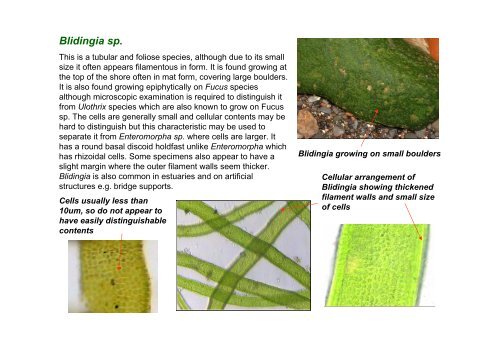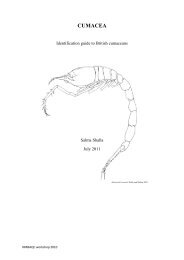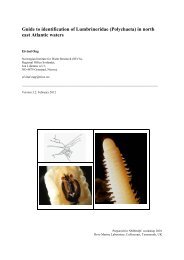s A Field Guide to the British Seaweeds - NMBAQC
s A Field Guide to the British Seaweeds - NMBAQC
s A Field Guide to the British Seaweeds - NMBAQC
Create successful ePaper yourself
Turn your PDF publications into a flip-book with our unique Google optimized e-Paper software.
Blidingia sp.<br />
This is a tubular and foliose species, although due <strong>to</strong> its small<br />
size it often appears filamen<strong>to</strong>us in form. It is found growing at<br />
<strong>the</strong> <strong>to</strong>p of <strong>the</strong> shore often in mat form, covering large boulders.<br />
It is also found growing epiphytically on Fucus species<br />
although microscopic examination is required <strong>to</strong> distinguish it<br />
from Ulothrix species which are also known <strong>to</strong> grow on Fucus<br />
sp. The cells are generally small and cellular contents may be<br />
hard <strong>to</strong> distinguish but this characteristic may be used <strong>to</strong><br />
separate it from Enteromorpha sp. where cells are larger. It<br />
has a round basal discoid holdfast unlike Enteromorpha which<br />
has rhizoidal cells. Some specimens also appear <strong>to</strong> have a<br />
slight margin where <strong>the</strong> outer filament walls seem thicker.<br />
Blidingia is also common in estuaries and on artificial<br />
structures e.g. bridge supports.<br />
Cells usually less than<br />
10um, so do not appear <strong>to</strong><br />
have easily distinguishable<br />
contents<br />
Blidingia growing on small boulders<br />
Cellular arrangement of<br />
Blidingia showing thickened<br />
filament walls and small size<br />
of cells




